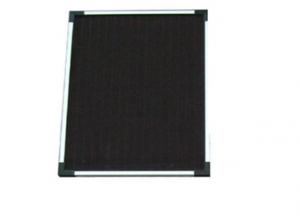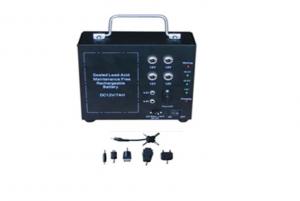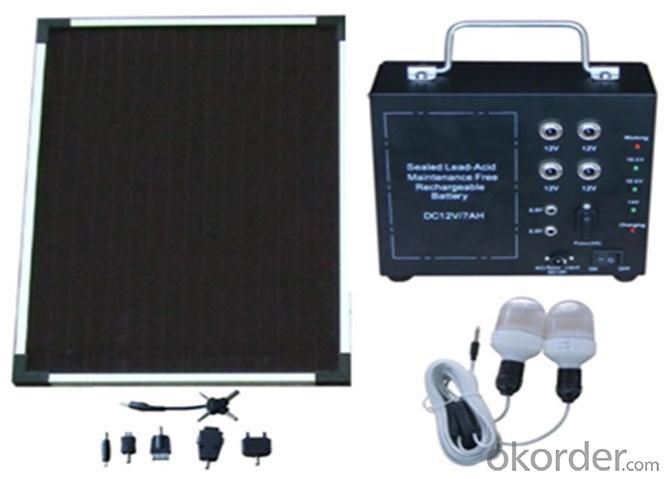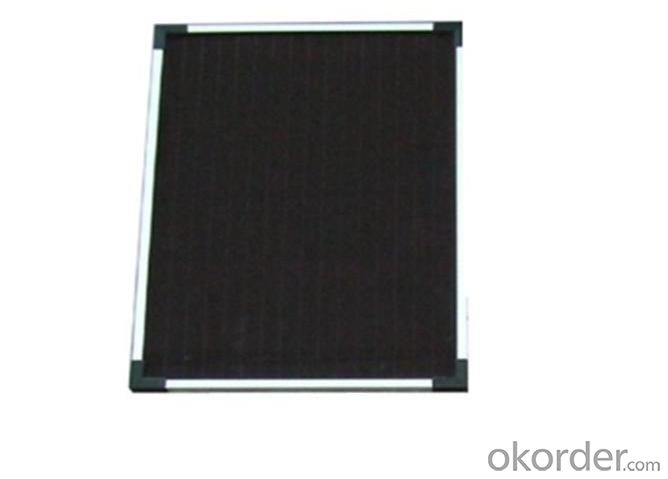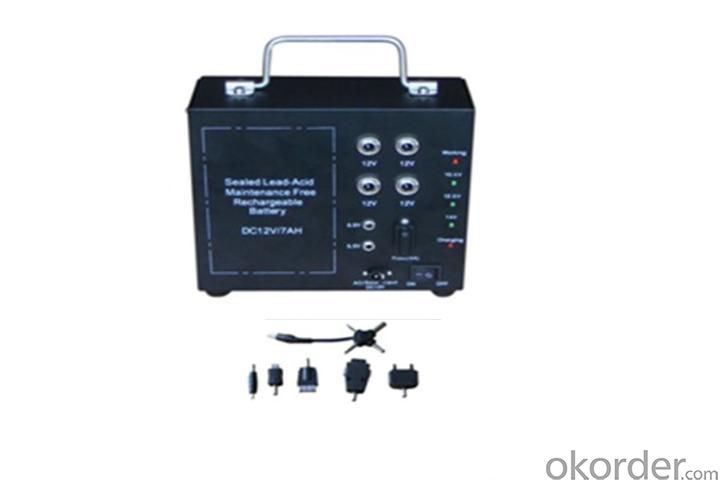Puerto Rico Solar Energy Systems CNBM-TS1 (5W)
- Loading Port:
- China Main Port
- Payment Terms:
- TT or L/C
- Min Order Qty:
- 1 set set
- Supply Capability:
- 1000 sets per month set/month
OKorder Service Pledge
OKorder Financial Service
You Might Also Like
Brief Introduction of Solar Energy System CNBM-TS1 (5W)
CNBM Solar Energy System is specialized in PV power 5W output, which takes advantage of reliable supplying, convenient installation and free maintenance, and has been used widely, and it is the compensation and substitution of normal power supply.
CNBM Solar panel offers high performance of power per square foot of solar array.Poly- or multicrystalline silicon(poly-Si or mc-Si): made from cast square ingots — large blocks of molten silicon carefully cooled and solidified.
The Sketching of Solar Energy System CNBM-TS1 (5W)
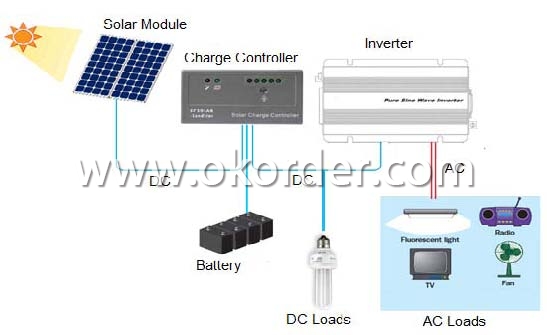
Components of Solar Energy System CNBM-TS1 (5W)
PV Array:
Convert sunlight instantly into DC electric power. Formed by the solar modules (also called photovoltaic modules) in accordance with the system requirements for series and parallel.
Solar Charge Controller:
A charge controller may be used to power DC equipment with solar panels. The charge controller provides a regulated DC output and stores excess energy in a battery as well as monitoring the battery voltage to prevent over charge or over discharge. An inverter can be connected to the output of a charge controller to drive AC loads.
Inverter:
Converts DC output power of photovaltaic soalr panels into standard AC power for use in the local off-grid electrical network. It is a critical component in a photovoltaic system, allowing the use of ordinary commercial appliances.
Battery banks:
Stores energy when there is an excess coming in and distribute it back out when there is a demand. Solar PV panels continue to re-charge batteries each day to maintain battery charge.
Technical data of Solar Home System CNBM-TS1 (5W) | ||||
Solar panel | Pmax | 5W | ||
Vmp | 17.5V | |||
Imp | 0/29A | |||
Battery | Capacity | 12V/7AH | ||
Accessories | 5W Amorphous Solar panel*1 Power box *1 LED bulb with 10m wire*2 Mobile phone adapter*1 Mounting pad*1 | |||
Package Data of Solar Home system CNBM-TS1 (5W) | ||||
Carton Size (L*W*H mm) | Carton Weight(kg) | PCS/CTN | 20’(PCS) | 40’(PCS) |
766*228*405 | 17.7 | 2 | 790 | 1650 |
Factory Picture of Solar Energy System CNBM-TS1 (5W)
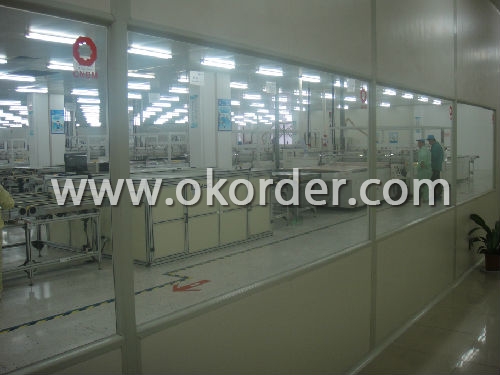
Package Picture2 of Solar Energy System CNBM-TS1 (5W)

- Q: Can solar energy systems be used for powering electric plane systems?
- Yes, solar energy systems can be used for powering electric plane systems. Solar panels can be mounted on the surface of the plane to capture sunlight and convert it into electricity. This electricity can then be used to power various systems on the plane, such as its propulsion, navigation, and communication systems. However, it is important to note that currently, solar energy alone may not be sufficient to power an entire electric plane during flight, as planes require significant amounts of energy. Nevertheless, solar energy can be a valuable supplement to reduce fuel consumption and emissions in electric planes.
- Q: Can solar energy systems be used in areas with limited access to solar junction boxes?
- Yes, solar energy systems can be used in areas with limited access to solar junction boxes. In such cases, alternative methods like micro-inverters or power optimizers can be employed to convert the DC power generated by solar panels into AC power without the need for a central junction box. These decentralized solutions allow for greater flexibility in system design and can be particularly useful in remote or challenging locations where traditional grid-connected systems may not be feasible.
- Q: Can solar energy systems be used for powering oil and gas extraction operations?
- Yes, solar energy systems can be used for powering oil and gas extraction operations. By utilizing solar panels, the sun's energy can be harnessed and converted into electricity to power various equipment and machinery involved in the extraction process. This not only reduces the reliance on traditional fossil fuel-based energy sources but also helps in minimizing the carbon footprint and promoting sustainable practices in the oil and gas industry.
- Q: How do solar energy systems affect the reliability of the electrical grid?
- Solar energy systems can have both positive and negative effects on the reliability of the electrical grid. On the positive side, solar energy systems can help diversify the energy sources used for electricity generation, reducing dependence on traditional fossil fuels. This diversification can enhance the overall stability and reliability of the electrical grid. Furthermore, solar energy systems can contribute to reducing peak demand on the grid. During daylight hours, when solar panels are most productive, they generate electricity that can be directly utilized by nearby buildings or fed back into the grid. This can help alleviate stress on the grid during periods of high demand, reducing the likelihood of power outages or blackouts. However, solar energy systems also present some challenges to grid reliability. One of the key concerns is the intermittent nature of solar power generation. Solar panels only produce electricity when the sun is shining, meaning that their output is subject to variations due to weather conditions and the time of day. This intermittency can make it challenging to match supply with demand, especially during cloudy or nighttime hours, leading to potential imbalances or fluctuations in the grid. To address this issue, grid operators need to carefully manage the integration of solar energy systems into the electrical grid. This involves implementing advanced forecasting and monitoring technologies to accurately predict solar power generation and plan for any potential fluctuations. Additionally, energy storage systems, such as batteries, can be deployed to store excess solar energy during periods of high generation and release it during times of low generation, helping to smooth out the intermittent nature of solar power. Overall, while solar energy systems bring many benefits to the electrical grid, such as diversification of energy sources and reducing peak demand, they also pose challenges related to intermittency. By adopting advanced technologies and implementing effective grid management strategies, these challenges can be mitigated, ensuring a reliable and resilient electrical grid.
- Q: Can solar energy systems be used for powering security cameras?
- Yes, solar energy systems can be used to power security cameras. Solar panels can be installed to capture sunlight and convert it into electricity, which can then be used to power security cameras and other surveillance equipment. This provides a sustainable and cost-effective solution for remote or off-grid locations where traditional power sources may be unavailable or expensive to connect. Additionally, solar-powered security cameras can operate independently and are not affected by power outages, making them a reliable option for continuous surveillance.
- Q: Can solar energy systems be used in disaster-prone areas?
- Yes, solar energy systems can be used in disaster-prone areas. In fact, they can be particularly beneficial in such areas. Traditional power grids are often fragile and vulnerable to damage during natural disasters such as hurricanes, earthquakes, or floods. This can leave the affected areas without electricity for extended periods, hindering relief and recovery efforts. Solar energy systems, on the other hand, are decentralized and can operate independently of the grid. These systems consist of solar panels that convert sunlight into electricity, which can be stored in batteries for use during times of power outage. This allows critical facilities, such as hospitals, emergency response centers, and shelters, to continue functioning even when the grid is down. Solar energy systems can provide a reliable source of power for lighting, communication, refrigeration, and medical equipment, greatly enhancing the resilience and effectiveness of disaster response. Furthermore, solar energy systems can also be used to power water pumps, providing communities with access to clean water during times of crisis. This is particularly important in disaster-prone areas, where access to safe drinking water can be severely compromised. Solar-powered pumps can extract water from wells, rivers, or other sources, ensuring a constant supply for drinking, sanitation, and hygiene purposes. Additionally, solar energy systems can contribute to long-term recovery efforts in disaster-prone areas. By reducing dependence on fossil fuels and traditional power grids, they can help build more sustainable and resilient communities. Solar panels can be installed on rooftops or in open spaces, making use of abundant sunlight resources. This not only reduces greenhouse gas emissions and mitigates climate change but also provides a reliable and affordable source of energy for homes, businesses, and public infrastructure. In conclusion, solar energy systems can be effectively used in disaster-prone areas to provide reliable power, support critical services, and contribute to long-term resilience. By harnessing the power of the sun, these systems offer a sustainable and decentralized solution to energy needs, ensuring that communities can withstand and recover from natural disasters more effectively.
- Q: How do solar energy systems contribute to energy independence?
- Solar energy systems contribute to energy independence by harnessing the power of the sun to generate electricity. This renewable energy source reduces our reliance on fossil fuels, which are finite and contribute to climate change. By generating clean and sustainable energy, solar systems help countries and individuals become less dependent on imported energy sources, promoting self-sufficiency and reducing the vulnerability to price fluctuations and geopolitical tensions associated with fossil fuel imports.
- Q: Is it possible to sell excess electricity generated by a solar energy system?
- Yes, it is possible to sell excess electricity generated by a solar energy system.
- Q: Can solar energy systems be used for powering off-grid eco-lodges?
- Yes, solar energy systems can definitely be used for powering off-grid eco-lodges. Solar panels can be installed on the roofs of these lodges to capture sunlight and convert it into electricity. This renewable energy source can be stored in batteries to provide power during periods of low sunlight or at night. By harnessing solar energy, off-grid eco-lodges can greatly reduce their reliance on fossil fuels and minimize their environmental impact.
- Q: What is a photovoltaic system?
- A photovoltaic system is a technology that converts sunlight into electricity by using solar panels, which consist of multiple solar cells. These cells absorb photons from the sunlight and generate an electrical current through the photovoltaic effect. This renewable energy system is widely used to generate clean electricity for various applications, such as powering homes, businesses, and even entire cities.
Send your message to us
Puerto Rico Solar Energy Systems CNBM-TS1 (5W)
- Loading Port:
- China Main Port
- Payment Terms:
- TT or L/C
- Min Order Qty:
- 1 set set
- Supply Capability:
- 1000 sets per month set/month
OKorder Service Pledge
OKorder Financial Service
Similar products
Hot products
Hot Searches
Related keywords

